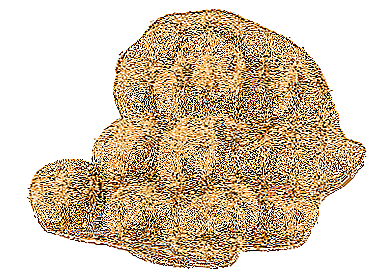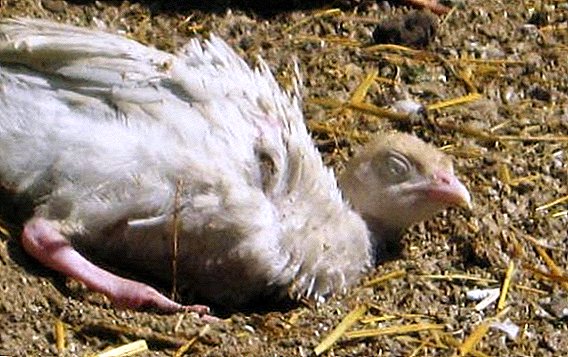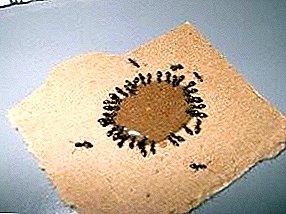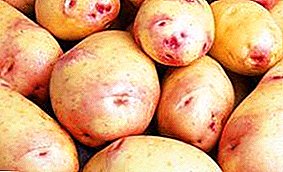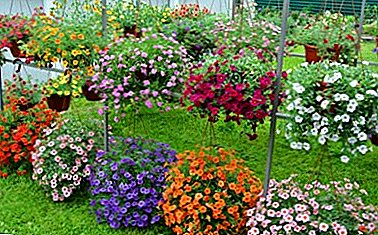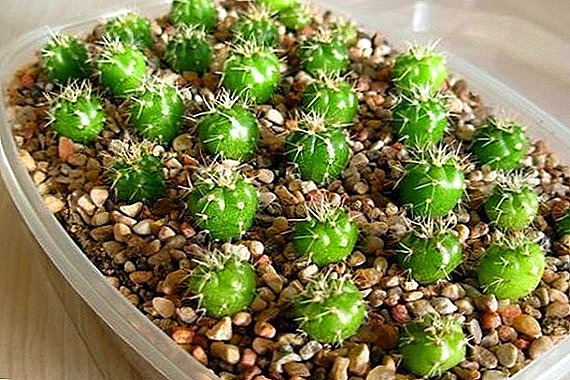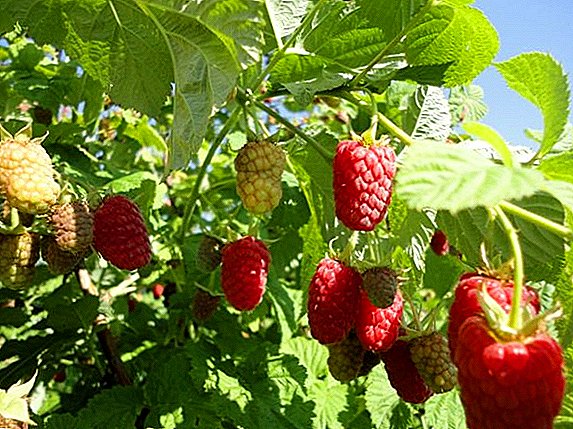 In modern gardening, there are many varieties of cultivated plants. But not every one of them managed to settle down on the garden plots practically all over the world and to become a truly reference highly productive species. One such plant is the Cascade Delight raspberry variety. Berry is one of the most successful products of a modern breeding school, which in just a few decades has become the favorite variety for both private gardeners and large agricultural holdings. However, unfortunately, not many of us know what this variety really needs for successful development and high-quality fruiting. In this article we will reveal the secrets of the successful cultivation of raspberry "Cascade Delight", as well as examine in detail the agrotechnics of its cultivation.
In modern gardening, there are many varieties of cultivated plants. But not every one of them managed to settle down on the garden plots practically all over the world and to become a truly reference highly productive species. One such plant is the Cascade Delight raspberry variety. Berry is one of the most successful products of a modern breeding school, which in just a few decades has become the favorite variety for both private gardeners and large agricultural holdings. However, unfortunately, not many of us know what this variety really needs for successful development and high-quality fruiting. In this article we will reveal the secrets of the successful cultivation of raspberry "Cascade Delight", as well as examine in detail the agrotechnics of its cultivation.
Variety description
Variety "Cascade Delight" is a product of American selection. The plant was bred in Washington (USA) at the base of the Puileap research station by directly crossing the varieties WSU 994 and Chilliwack in 1989. Such a successful combination of mother plants made it possible to obtain an almost ideal fruit-bearing culture, which is distinguished not only by high yield, but rather rich taste characteristics.
Check out the best raspberry varieties: Herideage, Barnaulskaya, Ispolin, Pride of Russia, Canadian, Kirzhach, Polka, Atlas, Cumberland, Tyberry and Karamelka .
The plant is a tall shrub that can reach a height of 1 to 3 meters. With all the agrotechnical norms, it is possible to get a powerful, but compact plant with a horizontal direction of shoots. The surface of the branches is smooth, the number of thorns is minimal. The level of seed formation is medium, the shrub can give about 7-8 shoots of substitution. The leaves of "Cascade Delight" are large and wide, they have a complex structure. The leaves are located on the shoots in groups of 3 pieces, which makes it possible to shade the berries from excessive sun. The root system of the bush is highly branched and sinuous, it helps the plant to safely withstand any adverse periods. 
The flowering of the bush is abundant, the flowers are small, about 1 cm in cross section. During the period of active flowering, they are collected in characteristic racemes that are located in the leaf axils or on the tops of the branches. The plant belongs to the varieties of mid-early ripening, so the active fruiting of raspberries in temperate climates occurs in early July, in warmer regions - in the first half of June. Fruiting is often not stretched, the period of harvesting of fruits lasts for no more than 21-24 days.
After flowering the bushes ripen juicy and fragrant berries of rich red hues. Fruits of the variety are small, hairy drupes, fused together in a zone of receptacle. Raspberry is suitable for both amateur and professional cultivation for the use in raw form, as well as a raw material for all kinds of drinks, jams, preserves, etc.
Did you know? The first mention of such a plant as raspberry, is found in the writings of the ancient Roman writer and orator Cato the Elder, dating back to the III millennium BC. er

The main regions of growing berries:
- Belarus;
- Belgium;
- Great Britain;
- Russia;
- USA;
- Ukraine.
- high yield and quality of the crop;
- resistance of berries to fall;
- suitability of fruits for mechanical harvesting;
- increased keeping quality of the crop;
- good berry transportability;
- excellent presentation of the crop;
- high resistance of the plant to anthracnose, root rot and gray rot;
- resistance to drought and severe frosts.

However, this raspberry has its drawbacks. Despite the fact that they do not fundamentally change the overall positive opinion about the variety, they need to be known to every grower who dares to grow Cascade Delight on his own plot. These include:
- the need of plants for special agricultural technology;
- uneven development of shoots in the process of growth;
- low resistance of the variety to dwarfism;
- uneven color of berries (in rare cases).
- the ability to produce maximum yields for a minimum period of time;
- larger fruits than related varieties (15-20%);
- fruits differ in reference taste and aroma;
- special location of the leaves on the shoots (helps protect the berries from excessive solar radiation);
- the minimum number of spikes on the shoots, which facilitates the process of harvesting.

Characteristics of berries and yield
"Cascade Delight" is characterized by a fairly high yield. During the season, with industrial cultivation, it is possible to collect up to 5 kg of fruits from one bush, but under garden conditions, the yield can increase up to 7 kg. In this case, it is possible to gather about 20-25 tons of berries from 1 hectare of plantings. Fruits differ in rather large sizes, at the same time the weight of one berry is within 6-8 g. The shape of the fruit is conical, slightly elongated. Regardless of the growing conditions of the berries have a bright and rich flavor. They are characterized by soft, juicy and firm flesh, with moderate sourness and fairly high levels of sugar.
Did you know? Despite the fact that raspberries were known to the ancient Romans and Greeks, they began to use its fruits only in the IV century, before this plant was used exclusively for medicinal purposes.
Agrotehnika cultivation and care for raspberries
In most cases, the cultivator cultivating the Cascade Delight variety is practically no different from cultivating the related raspberry varieties. However, like any other plant, this raspberry has its own characteristics and secrets of its cultivation, which provide it with high yields and the highest quality fruits. Therefore, only strict observance of all agrotechnical methods for growing crops will transform the process not only into a profitable, but also fairly simple task. 
Selection of seedlings
Raspberry is one of the most unpretentious plants, so even weakened seedlings are capable of successful rooting. However, in practice, everything is not so rosy. In order for the plant to quickly grow and soon pleased with its fruits, only high-quality planting materials should be selected for planting. Therefore, the choice of seedlings must be approached with special scrupulousness.
In addition to red raspberry varieties, yellow and black raspberries are also found in home gardening, with many beneficial properties.
The main features of quality seedlings:
- the correct length of the seedling (not more than 15-20 cm in height);
- several full-fledged stalks on one bush;
- at the base of the stems should be at least 3 viable buds, since it is from them that the young shoots will grow, on which the crop will ripen;
- branched and powerful root system with wet and elastic roots, without any damage.

When choosing seedlings should also pay attention to the storage conditions of planting material, since this feature directly affects the viability of seedlings. Plants must be kept cool and fully protected from direct sunlight. It is unacceptable to store plants in plastic bags and bags. This leads to steaming and rotting of their root system, which is the main cause of death of seedlings in the garden.
Important! Acquisition of planting material in natural markets is not recommended. Such seedlings often do not have the necessary varietal purity, so for quality material should be treated exclusively in specialized stores.
It is best of all to transport the seedlings in a loose, slightly moistened cotton fabric, which will provide the plants with the necessary moisture and oxygen access. But when transporting seedlings for short distances, the use of plastic bags for packaging is still allowed, and the plant should be provided with good ventilation. After purchasing, seedlings are transplanted to the open soil within 24 hours, if necessary, this procedure can be delayed for several days, but for this, the seedlings need to be slightly buried in the soil and watered abundantly. 
Conditions of detention
The raspberry feels best in sunny, well-lit areas, away from drafts. In this case, the plant requires constant ventilation, so they should be planted in open areas. Best of all the bushes will feel on the south or south-west side of the site along a low fence. In this case, the bushes will be maximally protected from cold winds, regardless of the climatic characteristics of the region.
Raspberries are planted in solid rows at a distance of 2.5 cm from each other. When growing small and medium-sized plantations, the distance between adjacent plants in a row should not be less than 1-1.5 m, while industrial cultivation of the crop can be reduced to 0.7 m. Bushes are planted in separate holes in the previously prepared and fertilized soil.
Shrubs must be limited to any fruit crops, as close proximity to fruit plants can adversely affect the growth and yield of raspberries. To do this, at a distance of about 1 meter from the bushes, you need to completely abandon the cultivation of any cultivated plants, creating a small transition zone from wild grass or lawn grass. In this case, it is necessary to cut the grass periodically in order to avoid growth oppression and the vital activity of the shrub. 
In addition, raspberry perfectly responds to weeding and loosening the soil around the base of the bush. This agrotechnical method contributes to the saturation of the soil with oxygen, and also makes it possible to reduce the number of parasitic flora. For the first time weeding and loosening are carried out in early spring, and then the procedure is carried out periodically and as needed, but at least 3-4 times a month.
Soil and fertilizer
Cultivate the variety should be on fertile, well-drained soils, therefore, to grow shrubs on poor clay, loamy and sandy unprepared soils is not recommended. That is why before planting the soil should be fertilized. The procedure begins in early spring, after the complete melting of melt waters from the site.
To enrich the soil and nourish the plants, use organic fertilizers: straw, pigeon droppings, Florex granulated chicken droppings, bone meal, fish meal, whey, potato peel, compost, eggshell, banana peel fertilizer and tobacco dust.
To do this, humus or compost is put into the soil at the rate of 5-7 kg / sq m. If necessary, organic fertilizers are mixed with sand in a 2: 1 ratio to improve water permeability. The site should be also saturated with mineral fertilizers. Best of all, superphosphate (90 g / sq m) with the addition of potassium sulphate (70 g / sq m) is suitable for these purposes. If your site does not need additional fertilizer, it can be enriched with simple wood ash (0.5 kg / sq. M.), It will help give the berries a richer taste and aroma. 
The shrub does not tolerate excessively acidic soils, therefore, before planting seedlings, it is necessary to check the planting site for acidity levels using special garden indicators. The optimum pH should be in the range of 6-7.5. In case of excessively acidic soil, the area should be alkalized. To do this, dolomite flour or hydrated lime (0.5 kg / sq. M.) Is introduced into the soil, after which the landing site is carefully plowed up. To improve drought tolerance, it is recommended to plant raspberries only in places with high groundwater levels, which should not be lower than 0.8-1 m from the upper soil layers.
Important! Fertilizing the soil with peat is prohibited, as it can cause significant acidification of the soil.
Additional top dressing is carried out periodically, depending on the growing season. In the spring, before active flowering, the plants need organic feed, so they are fertilized with an aqueous solution of manure (1:10) or bird droppings (1:20). You can replace organics with the help of the complex mineral fertilizer Kemira (3 tablespoons l / 10 liters of water) or analogues. 
After fruiting the raspberries can be fed with wood ash, with the calculation of 2 kg / sq.m. It will help the bush to nourish the potassium, which next year will have a favorable effect on the taste characteristics of the berries. In the autumn, the bushes must definitely live on with a nitroammofosca with the calculation of 200 g / m2. plot.
Watering and moisture
Regular and abundant watering is the main condition for the cultivation of healthy and fruiting raspberries. The lack of moisture can lead to inhibition of growth of the bush, which will directly affect its productivity. Violation of the water regime can also cause wilting of the plant, as well as reducing the taste characteristics of the berries, so watering should be approached with the utmost seriousness. But, despite the universal love of raspberries for water, it is not worthwhile to re-moisten the soil, as this can cause the root system to rot and the bushes die.
It is best to ensure the plantings sparing, but abundant watering throughout the growing season. To do this, the soil should be watered no more than 2-3 times a month, while the maximum moisture should be saturated with a layer at least 30-35 cm thick. The amount of water used for irrigation should be chosen strictly on the basis of 30 l / sq m. plantings. At the same time, it is recommended to water the shrub in the evening, as only during this period the water will be able to absorb into the soil as efficiently as possible. 
Relation to temperature
Raspberry is a traditional resident of regions with a northern and temperate climate. But in order for the shrub to actively develop and bear fruit, it should be grown exclusively in those regions where the sum of active temperatures during the season reaches at least +1200 ° C. Based on this, during the period of active growing season, the culture must be in a temperature optimum not lower than + 20 ... +25 ° С.
The plant is resistant to frosts, but with a decrease in the average daily temperature below -25 ° C, there is a gradual damage to the shoots of the shrub, as well as its root system. That is why, before the start of a serious decrease in temperature in regions with a small snow cover, the shrub requires mandatory artificial shelter.
Reproduction and planting
Raspberry seedlings can be rooted at almost any time of the year, but it is best to choose spring for this when the average daily temperature will be around 10 ° C. As mentioned above, the raspberries are planted in a row in a previously prepared and marked soil. Each seedling is planted in a separate hole with a depth of about 30-50 cm and a width of about 50-60 cm (depending on the size of the root system). The root system at the same time should fill the hole evenly.
If you want raspberry bushes to grow and develop properly, learn how to plant raspberries in the fall and spring.

To improve the growth of seedlings in the hole should be sure to fall asleep a small amount of humus or straw, and also pour it abundantly. To fill up with soil the root system needs to be gradually, avoiding excessive consolidation. After planting, the seedlings should always be cut 2-3 cm above the last viable bud. This procedure is a prerequisite for the rapid growth of plantings, since pruning has a positive effect on the activity of seedlings.
Important! When planting raspberries, you should definitely pay attention to the level of the replacement kidney, it should be at a height of about 3-4 cm above the soil.After all manipulations, the soil should be watered, then repeat the procedure the next day (further watering is carried out as necessary). To simplify the care of plantings, it is recommended to provide a garter to the shrub. To do this, along the entire row, it is necessary to tension metal wire about 0.5 cm thick at a height of 1-1.5 m above the ground level. Once the bush has reached the required height, the wire will become an ideal supporting structure for it.

Pruning
To improve the aesthetic appearance, as well as increase the yield of plantations, raspberries need periodic pruning. One makes it possible to avoid thickening of the plantations, which directly affects the size of the berries, as well as their taste. The main pruning start in early spring, after the descent from the site of snow cover. The main stages of pruning:
- The first to eliminate dead and damaged during the wintering shoots. Для этого нужно полностью обрезать отмершие части растения, вплоть до первой живой почки. При этом перед почкой нужно обязательно оставить небольшой пенечек высотой около 2-3 см.
- After sanitary pruning proceed to the main cleaning of the bush. It consists in thinning the shrub by removing old (three-year) shoots. The optimal number of branches on a bush should not exceed 7-10, otherwise young shoots should be cut.
- Trimming the tips of the shoots. For this, the tops of each branch are shortened by 15-20 cm (35-40 cm in the case of a mature bush). With a properly performed procedure, at the moment of active flowering, each trimmed shoot will yield about 5 young fruit-bearing branches about 50 cm long.

Basic recommendations for the procedure:
- cleaning raspberries is best done on a dry, sunny and warm day, this will help speed the wound healing process;
- pruning is carried out with a knife or garden shears at an angle of about 45 °, bevel to the bush;
- In order to avoid plant infection with pathogenic fungi, all instruments must be disinfected. To do this, the inventory is thoroughly washed under running water, after which it is dipped for 10 minutes in a 70% alcoholic solution or 0.5% peroxide solution;
- wounds need to be treated with copper sulfate solution, it will protect the bush from infectious diseases;
- After trimming the raspberries, you need to tie it up with a string to a wire support.

Important! Do not forget about summer pruning. Raspberries require constant care, therefore, in order for plants to grow and bear fruit safely, throughout the entire season, branches of branches that fade as well as those affected by all sorts of pathogenic infections must be cut.
Growing difficulties and recommendations
Despite the fact that raspberries are one of the traditional inhabitants of the northern and temperate zones, this plant belongs to rather capricious cultures. That is why many beginners and experienced gardeners face many difficulties during cultivation of the species, caused by the physiological characteristics of the shrub. The most common among them are the following problems:
- withering shoots and leaves;
- low yield;
- degeneration varieties.

The problem of withering shoots and leaves on a raspberry bush is found in every gardener, since there can be a lot of reasons for this pathological process. But often the plant wilting is caused by improper care of plantings, which leads to a violation of water-soil conditions, as well as the necessary microclimate.
Raspberries - a real storehouse of vitamins for our health. Read about the healing properties and use of raspberries.
Under such conditions, the plant develops natural processes of tissue destruction, which ultimately leads to its death. It can also cause a decrease in plant immunity, which undoubtedly leads to the defeat of the bush by various pathogenic microorganisms. Wilting can also have a parasitic nature, but in the end, the reason for this is still non-compliance with the general agrotechnology of cultivation of a crop.
Low yields can have several causes. Often, a meager harvest is observed when the general rules for the care of shrubs are not observed (pruning, watering, feeding, etc.), and is also a consequence of the natural aging of the bush. In order to prevent a decrease in the fruitfulness of the variety, it is imperative to strictly adhere to all the above recommendations for the care of raspberry plantations. 
Variety degeneration is a consequence of natural biological processes in the development of shrubs. The causes of this pathology may be mass, but they are all the result of growing a monoculture on the site for a long time. Therefore, when cultivating raspberries in the country, it is necessary to provide a system for gradually changing the location of the beds on the site.
Did you know? The scientific name of raspberry (Rubus idaeus) was given to the plant by the ancient Roman writer Pliny the Elder in the 1st century AD. er
Pests, diseases and prevention
As mentioned above, the Cascade Delight variety is highly resistant to various diseases and pests. However, if the general rules and the necessary measures for the care of plantings are not followed, raspberries may be affected by the following diseases:
- ramulariasis - A fungal disease that causes lesions of the lamina and stems. It is caused by fungi of the genus Ramularia.. The disease leads to a massive fall of the foliage and death of the shoots. Ramulariasis is manifested in the form of characteristic white spots on the green mass of raspberries with small dots in the center. Over time, the spots completely hit the leaf blade, which leads to the death of the leaf. Fight the disease by spraying the plants with an aqueous solution of colloidal sulfur (50 g / 10 l). To prevent ailment, plantings should be periodically treated with any complex fungicide (Fitosporin, Zircon, etc.) or Bordeaux mixture;
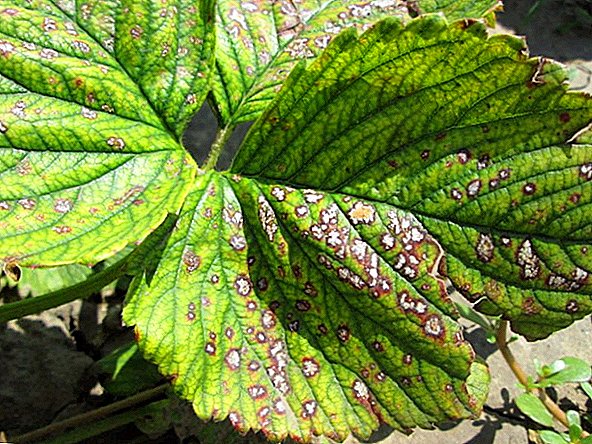
- rust - an infectious fungal disease, which manifests itself in the form of small orange tubercles. It is caused by a variety of fungi of the order Pucciniales. With the intensive development of the causative agent, the disease leads to the death of the green mass of the bush, and also significantly reduces the yield of the crop. They fight rust with complex fungicides (2% Nitrafen solution, 1% DNOC solution, etc.). For prophylactic purposes, the use of fungicides such as Fitosporin, Zircon, etc., or Bordeaux liquid;

- powdery mildew - most often observed in hot weather, the cause of the disease are ectoparasitic fungi of the order of Erysiphales. Manifests a disease in the form of white plaque on the leaves. The disease leads to a deterioration in the growth and development of raspberries, as well as to the deformation of the lamina and young shoots, which directly affects the yield of the shrub. They combat powdery mildew by treating affected bushes with Bordeaux liquid or complex fungicides;
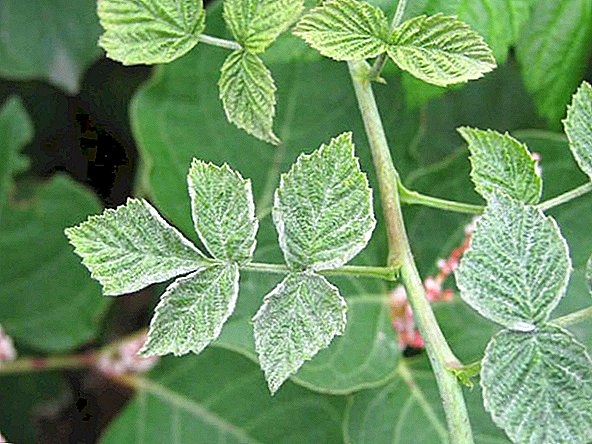
- sprouting (dwarfism) - raspberry virus disease, which leads to the formation on the bush of many long and thin shoots that can not bear fruit. It is caused by a diverse group of pathogenic virus strains. Pathology is not amenable to treatment, therefore, in order to avoid its spread, the affected bushes are uprooted and burned. Carriers of the pathogen are a variety of insects and parasites, so the main measure of prevention of sprouting is reduced to the fight against the distributors of the disease (parasitic insects);

- leaf curl - A viral disease that leads to uncharacteristic for raspberry shortening and thickening of the shoots, while the foliage of the bush shrinks and bends down. This leads to inhibition of growth and fruiting shrubs, and in some cases, the death of the affected plant. The cause of the disease are various strains of pathogenic viruses. Pathology is not treatable, therefore, in order to avoid the death of the entire plantation, infected bushes are uprooted and burned. The main measure of curl prevention is to treat raspberries with drugs that inhibit the development of aphids on it - the natural carrier of the disease.
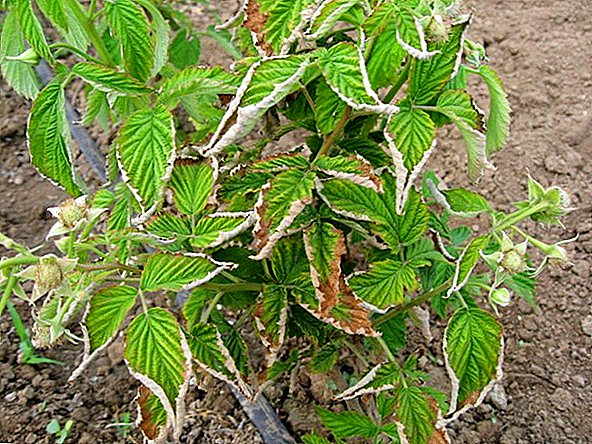
Find out what diseases you may encounter while growing raspberries.
In addition, crimson plantations can be damaged by a variety of pests, among which the most dangerous are:
- aphid - a group of insects of the family Hemiptera. Parasitizing on various parts of the plant, the insect causes the foliage to twist and dry, as well as young shoots, which reduces the quality and quantity of the crop. Aphid is a small insect of bright green color, about 2-3 mm long. You can identify it through the mass settlement of the pest on the green mass of the bush. To combat the parasite, use the following drugs: "Aktara", "Confidor", "Karbofos", etc. To prevent the development of aphids, plants should be periodically treated with any complex insecticide, and also strictly adhere to the agrotechnology of cultivation of the crop;

- spider mite - sucking pest from suborder Prostigmata. The insect is a traditional pest of raspberries and related species. With the active development of the tick causes wilting of foliage, as well as the death of green mass of the shrub. It is possible to identify the pest due to the characteristic white web, with which the mite braids the lower part of the leaflets. The parasite is an eight-legged insect with a length of not more than 0.5 mm, orange-yellow or greenish-yellow. To destroy spider mites, the plants are treated with "Fitoverm", "Karbofos" or interchangeable analogues. To prevent the appearance of spider mites, one should carefully follow the agrotechnology of cultivation of the crop;

- raspberry gallitsa - long-winged sucking insect of the family Cecidomyiidae. The pest is a small mosquito with a length of about 2 mm, with a black-brown shade of the body. Insect parasitic on young shoots or stems, causing a characteristic swelling in some parts of the shoots. Over time, the mosquito infects raspberries with its larvae, which leads to the withering and death of plant parts. They fight insects by destroying the affected parts of the bush. To prevent the parasite from occurring, the agrotechnology of raspberry cultivation should be carefully observed, and the soil and raspberry stands should be periodically treated with a 30% solution of Karbofos;

- fly stem - Diptera insect of the suborder Brachycera. The parasite is widely distributed both in individual areas and on large crimson plantations and is a small gray fly up to 6 mm long. Due to its parasitism, the insect lays eggs with larvae in the tissues, which causes damage to the young shoots and the suppression of the shrub. Fight a pest with pruning and destruction of withering plant parts. A preventive measure against insects is spraying raspberries during the period of budding with Iskra, Konfidor, Detsis or equivalent products;
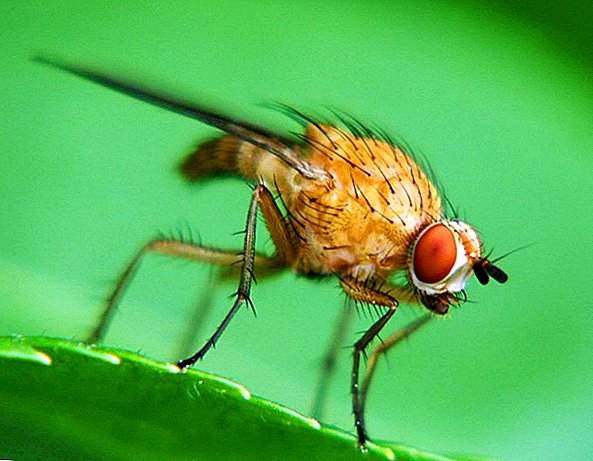
- raspberry beetle - Coleoptera of the genus Byturus. The pest is a small bug about 4 mm long, covered with fine hairs of yellow or gray color. During parasitization, the beetle eats away the raspberry buds, which reduces its yield and the quality of the berries, after which it lays parasitic larvae on the shrub. They fight insects by mechanically shaking off bugs from a bush during the raspberry budding period, as well as by treating plantings and nearby soil with Iskra, Confidor, Decis, or analogues. Preventive measures to combat the raspberry beetle consist in the periodic treatment of shrubs with complex insecticides, as well as the observance of the proper agricultural practices for growing crops;

- raspberry flower (weevil) - wingless insect of the genus Anthonomus. The parasite is a typical pest of raspberries and related plants, which is a grayish-black bug about 3 mm long with a characteristic elongated proboscis. In early spring, the bug eats away the young foliage and anthers of the buds, after which it lays in the bud the eggs from which the parasitic larvae grow. This leads to a decrease in the yield of the shrub and the oppression of its growth. Fight insects with any complex insecticide. In order to avoid the appearance of the parasite, raspberry plantations should be carefully subjected to all necessary agrotechnical methods of care, as well as preventive treatment before blooming with Karbofos, Iskra, Konfidor, Detsis or analogues.
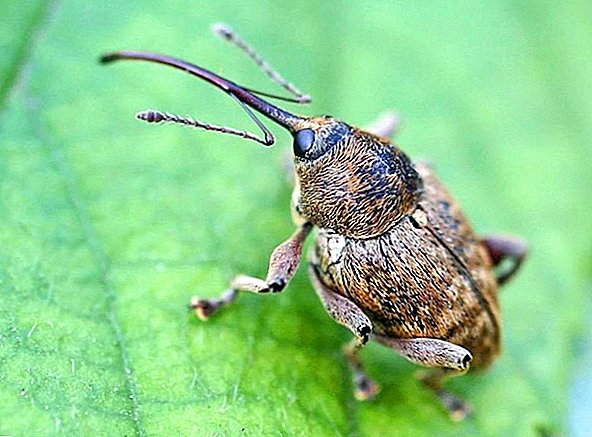
Did you know? The record holder for the production of raspberries is Russia, about 200 thousand tons of its fruits are grown annually in the state, which makes up about 50% of the entire market for products.
Variety "Cascade Delight" is one of the most high-yielding and beneficial for growing varieties of raspberries. It gives rich yields, as well as high-quality berries, which differ in reference taste. However, like any cultivated plant, this raspberry requires constant attention, as well as compliance with all agrotechnical care requirements. Only in this case, the raspberry jam will delight their harvest for many years.
Video: Raspberry "Cascade Delight"
Feedback from users about raspberry "Cascade delight"














